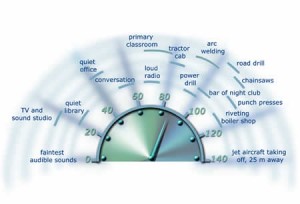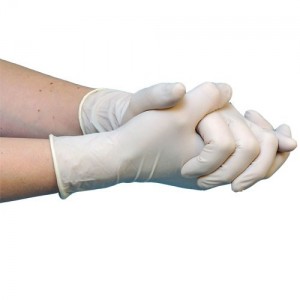A few weeks ago I published a blog providing an introduction to health surveillance https://www.splitdimension.co.uk/176/ giving the principles that should be followed when identifying risks in the workplace and whether employees should be assessed for health effects. It is often overlooked by businesses and although I would agree that health surveillance never cured anything, when done correctly it’s a crucial part of any risk and health management process. It is there to stop work related deteriorating health in its tracks by identifying early symptoms and alerting employers to potential problems in their working environments. Here are some of the more common health surveillance practices you should consider.
Noise (audiometry). If you are regularly exposing workers to levels of noise above 80dba you should be advising them of the potential risk to their hearing and making hearing  protection available. If you are exposing them to 85dba, you should be providing hearing tests to check whether their hearing is being affected by that noise – even if they wear the hearing protection. Tests are usually repeated every 2- 3 years but can be more often for
protection available. If you are exposing them to 85dba, you should be providing hearing tests to check whether their hearing is being affected by that noise – even if they wear the hearing protection. Tests are usually repeated every 2- 3 years but can be more often for
some employees whose hearing is not at the level expected. Some organisations choose
to assess more often as part of their risk management process. The range of potentially affected occupations are too numerous to list but any work that involves machinery, engineering, manufacturing, construction, quarrying and aircraft should be considered, in fact anything involving a motor or an explosive.
Hand Arm Vibration Syndrome. Those exposed to Hand Arm Vibration above 2.4 m/s sq should be assessed annually although only by questionnaire if there is no specific reason to see the individual. Where there are specific requirements, the employee should be seen and properly assessed by a clinical person trained in the assessment techniques. Also remember, where you have vibration, you usually have noise. Affected occupations include construction, engineering, agriculture and forestry, vehicle repair and quarrying.
There is currently no available health surveillance for whole body vibration although regular questionnaires can be used to identify those getting symptoms of back pain.
Lung function testing (spirometry). Any employee exposed to a chemical or substance that can affect lung function should have this tested regularly. Check your safety data sheets for this. The Health and Safety Executive site has a list of substances that can cause occupational asthma and includes isocyanates, castor bean dust, flour, soya, fish proteins and some dyes. There are many more and further information can be found in EH40 Workplace exposure limits (Second edition, published 2011). There is a free-to-download, web-friendly version or you can purchase on line at www.hsebooks.co.uk and bookshops. Affected occupations include bakers, vehicle spray painters, solderers in electronics assembly, woodworkers, those who work with laboratory animals, agricultural workers, healthcare workers and those in manufacturing and engineering.
This covers a huge number of employees but not everyone will be affected. In reality few who work in healthcare are at risk of developing occupational asthma but some are, you need to know who they are, whether you are one of them and what you need to do about it.
Drivers. If you drive either a lorry over 3.5 tonnes or a bus over 8 seats for work you will require a medical carried out by a doctor. This is usually your GP who will charge but can be a doctor working for your employer. This needs to be carried out when you first apply for a license and then every 5 years from the age of 45. The medical aspects of fitness to drive can be quite complicated so further advice may be needed, particularly if you have an underlying medical condition. Managers and supervisors take note.
The requirements for drivers of site based vehicles such as Fork Lift Trucks are less clear. There is no specific requirement for drivers of these vehicles to have any sort of medical and many don’t. However HSE guidance requires that the risks arising out of driving site based vehicles are managed “appropriately” and reference is made to the risks that ill health may have on the driver and others. Most reasonably sized businesses that I am aware of provide some sort of medical for their fork lift truck and other drivers – usually on a similar timescales to that of LGV drivers. Drivers of other vehicles, including company car drivers or those that drive their own cars on business, do not need medicals. They are though still covered by the same requirements as anyone else in that if you have a medical condition that you think may affect your driving you have a duty to notify the DVLA.
Skin surveillance. The skin is amazingly tough and resilient but not infallible and indestructible. Certain substances, situations and environments can be very damaging indeed. Water can be a serious hazard if you are immersed too long. Apart from  drowning, skin can start to break down if in prolonged contact with water and frequent and prolonged glove use can cause the same problem. Hands will sweat, causing a damp environment in the gloves which can badly affect the skin. The same hierarchy of controls apply but if you can’t eliminate or substitute the potential problem, you will need to take care how you organise and arrange the work, protect your employees, check them regularly for signs they are being affected and act on any findings. High risk jobs for skin problems are catering, hairdressing, health services, dentistry, printing, metal engineering, motor vehicle repair and construction. You may have noticed some common occupations in these lists and the reasons for them being high risk are:
drowning, skin can start to break down if in prolonged contact with water and frequent and prolonged glove use can cause the same problem. Hands will sweat, causing a damp environment in the gloves which can badly affect the skin. The same hierarchy of controls apply but if you can’t eliminate or substitute the potential problem, you will need to take care how you organise and arrange the work, protect your employees, check them regularly for signs they are being affected and act on any findings. High risk jobs for skin problems are catering, hairdressing, health services, dentistry, printing, metal engineering, motor vehicle repair and construction. You may have noticed some common occupations in these lists and the reasons for them being high risk are:
They involve the handling of substances.
They involve frequent washing of hands.
They require the frequent wearing of gloves.
All of these will lead to a break down and removal of the natural fats and oils contained within the skin and which are a fundamental part of its protective properties. So what to do? Make sure gloves of a good quality are provided, make sure there is a reasonable variety for comfort and preference and that when used, they are changed regularly. When gloves are changed, hands should be washed and moisturizing cream applied to help maintain them in good condition. Research done in the past 10 years has identified that moisturizing cream applied afterwards is far better for the skin than barrier cream applied before.
You should ensure someone is trained to check colleague’s hands regularly. If you have not done this before, then every month is probably appropriate although you should make the assessment and judge this for yourself depending on the work and processes being carried out. Less frequent checks can be made once you are satisfied the risk of skin problems is low. Employees should not wait for the next round of checks to highlight a problem though. As soon as possible skin damage is noticed, it should be acted upon.

Leave A Comment
You must be logged in to post a comment.